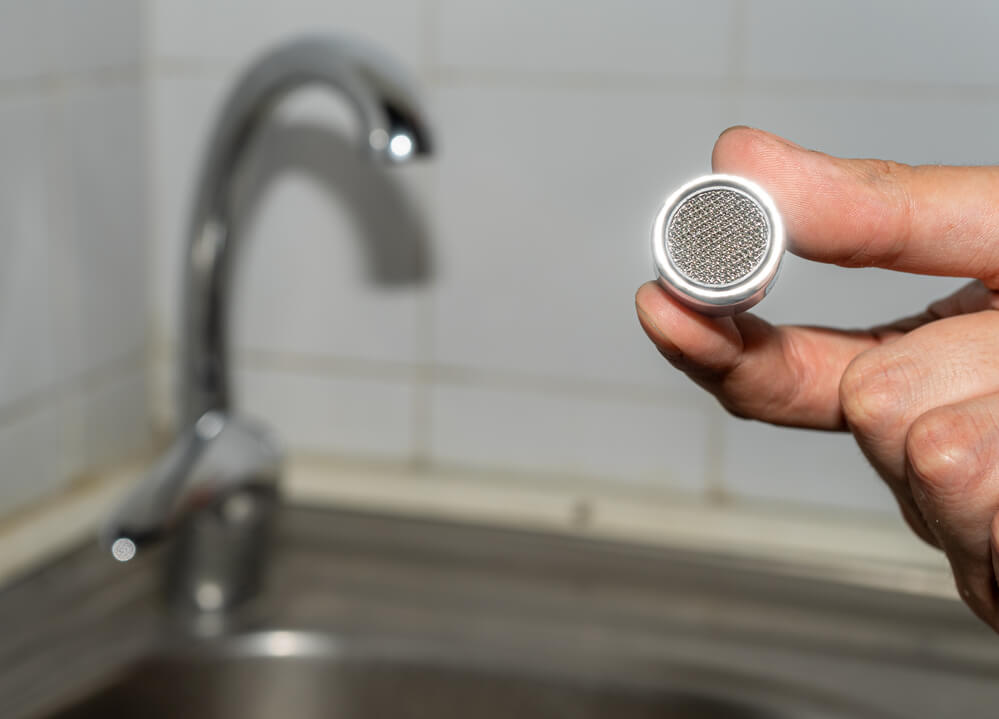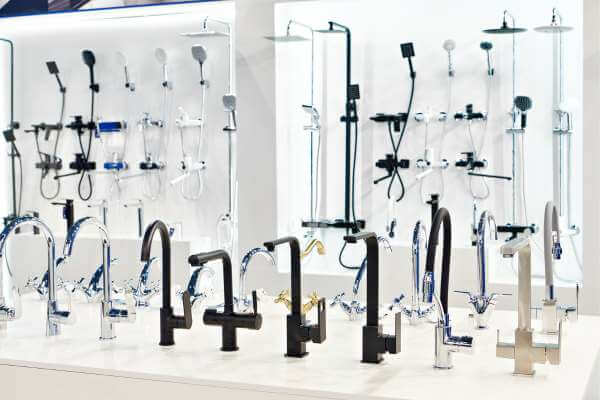A faucet aerator is a small device that attaches to the end of a faucet and mixes air with water to create a smooth and even flow. It also helps reduce water consumption, prevent splashing, and filter out debris. A recessed faucet aerator is one that is hidden inside the faucet spout and requires a special key or wrench to remove it. However, if you don’t have the key or wrench, you can still remove the recessed faucet aerator using some alternative methods. Here are some ways to remove a recessed faucet aerator without key:
Method 1: Using Your Hand
The easiest way to remove a recessed faucet aerator is to try unscrewing it by hand. If the aerator is not too tight or corroded, you may be able to loosen it with your fingers. To do this, follow these steps:
- Turn off the water supply to the faucet and drain any remaining water from the spout.
- Locate the recessed aerator at the tip of the faucet spout. It may have a small notch or slot that indicates where to grip it.
- Wrap a rubber glove or a dry cloth around your hand to improve your grip and protect your fingers from sharp edges.
- Grasp the aerator firmly with your fingers and twist it counterclockwise to unscrew it. You may need to apply some force and wiggle it slightly to break it loose.
- Once the aerator is unscrewed, pull it out of the faucet spout and clean or replace it as needed.
Method 2: Using Pliers
If you can’t remove the recessed aerator by hand, you can use a pair of pliers or vice grips to help you. However, you need to be careful not to damage the faucet spout or the aerator with the metal tools. To do this, follow these steps:
- Turn off the water supply to the faucet and drain any remaining water from the spout.
- Locate the recessed aerator at the tip of the faucet spout. It may have a small notch or slot that indicates where to grip it.
- Wrap a piece of masking tape or cloth around the aerator and the faucet spout to protect them from scratches and dents.
- Adjust your pliers or vice grips to fit snugly around the aerator. Make sure they are not too tight or too loose.
- Clamp the pliers or vice grips onto the aerator and twist it counterclockwise to unscrew it. You may need to apply some pressure and wiggle it slightly to break it loose.
- Once the aerator is unscrewed, pull it out of the faucet spout and clean or replace it as needed.
Method 3: Using Vinegar
If the recessed aerator is stuck due to mineral deposits or rust, you can try soaking it in vinegar to dissolve them. Vinegar is a natural acid that can loosen hard water stains and corrosion. To do this, follow these steps:
- Turn off the water supply to the faucet and drain any remaining water from the spout.
- Locate the recessed aerator at the tip of the faucet spout. It may have a small notch or slot that indicates where to grip it.
- Fill a plastic bag or balloon with white vinegar and secure it around the faucet spout with a rubber band or string. Make sure the vinegar covers the entire aerator.
- Leave the vinegar bag or balloon on for several hours or overnight. The vinegar will penetrate into the aerator and dissolve any deposits or rust.
- Remove the vinegar bag or balloon and discard it. Rinse the faucet spout with water and wipe it dry with a cloth.
- Try removing the recessed aerator by hand or with pliers as described above.
Common FAQ
Are all aerators removable?
The majority of faucets have a detachable component at the end known as an aerator. The purpose of the aerator is to introduce air into the water stream, resulting in a smooth flow with reduced splashing. To remove the aerator, simply unscrew it using your hands. If it is difficult to remove, you may need to use pliers or a wrench for added leverage.
What is the tool to remove an aerator from faucet?
The Cache Aerator Wrench is a specialized tool designed for removing specific types of bathroom sink faucet aerators. It is particularly useful for DIY enthusiasts who want to replace or clean aerators that have become clogged with hard water deposits. With this tool, even non-professionals can easily remove and replace aerators for maintenance purposes.
What are the two types of aerators?
There are two primary types of aeration systems: mechanical aeration and diffused aeration. Mechanical aeration functions by operating on the surface of a tank or lagoon, while diffused aeration operates from the bottom.
Conclusion
Removing a recessed faucet aerator without a key is not impossible if you know some tricks. You can use your hand, pliers, or vinegar to loosen and unscrew the aerator from the faucet spout. By doing this, you can clean or replace your faucet aerator and improve your water flow and quality.


 Hi, my name is Debra Klein and I love modern kitchen designs! As a product reviewer, it’s my mission to help homeowners choose the right modern kitchen accessories for their homes. I want to give them the best solution possible so they can make the best decision for their needs. Thanks for reading!
Hi, my name is Debra Klein and I love modern kitchen designs! As a product reviewer, it’s my mission to help homeowners choose the right modern kitchen accessories for their homes. I want to give them the best solution possible so they can make the best decision for their needs. Thanks for reading!




